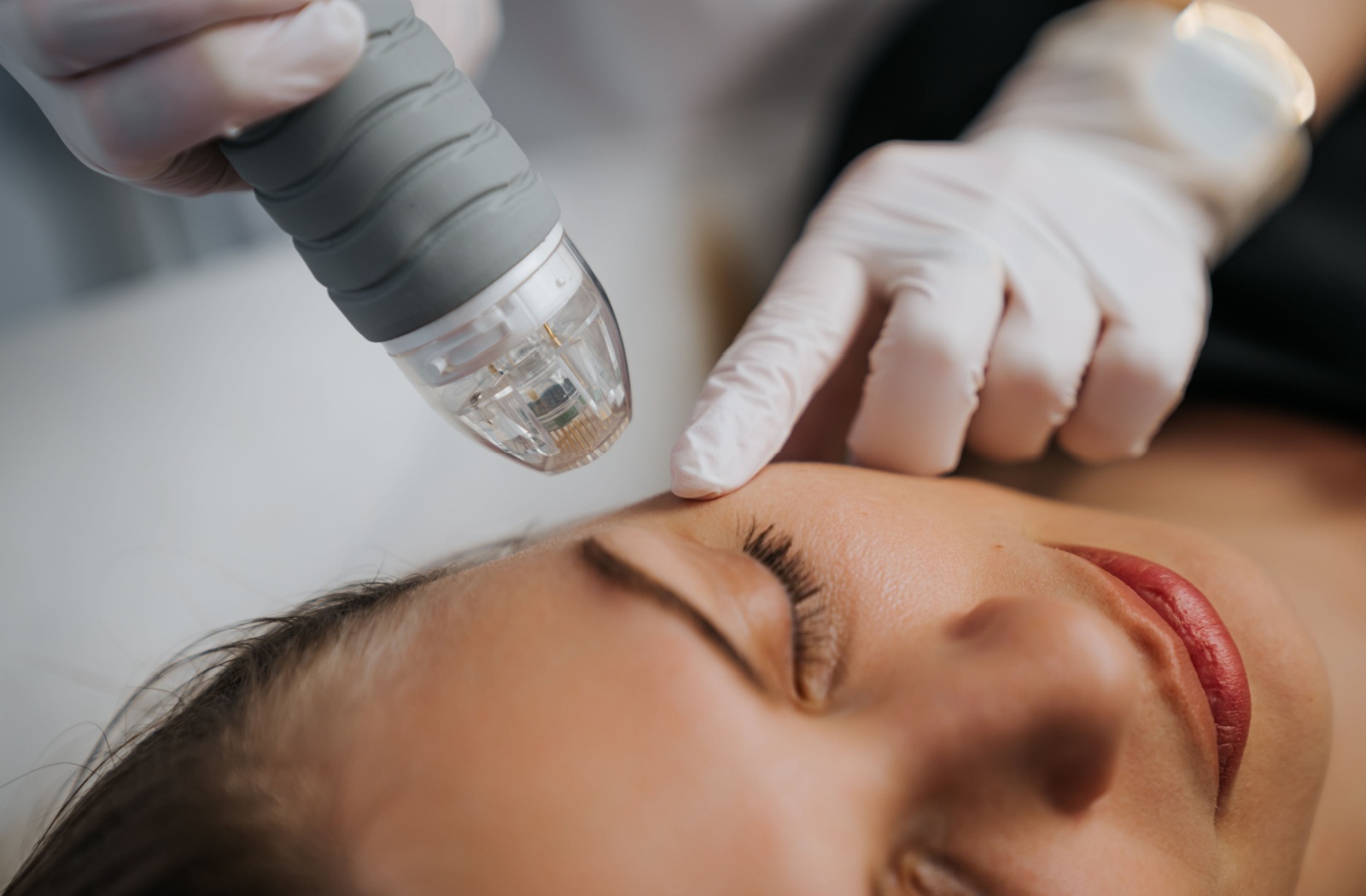Caring for our ocular health goes beyond visiting our optometrist for routine comprehensive eye exams. It also includes paying attention to any unnecessary irritation and discomfort that we may experience.
Persistent discomfort, dryness, and irritation are common symptoms of dry eyes. The key to long-term relief from these symptoms is targeting their underlying cause.
In the case of evaporative dry eye, one of the most common causes is meibomian gland dysfunction (MGD), which occurs when the glands that produce the oils necessary for quality tears become clogged. Fortunately, we there are several therapies that unclog the meibomian glands and help improve oil secretion, including:
- Warm Compress Mask
- Lid Wipes
- Meibomian Gland Expression
- Radiofrequency Treatment
- Intense Pulsed Light Therapy
Understanding Meibomian Gland Dysfunction
Meibomian glands are tiny oil-secreting structures along the rims of your eyelids.
These glands produce meibum, an oily substance that forms the outermost layer of the tear film. This oily layer prevents tears from quickly evaporating from the eye’s surface, helping your eyes remain moisturized throughout the day.
Without properly functioning meibomian glands, the tear film destabilizes, leading to dryness and subsequent discomfort. When these glands function properly, they contribute to clear, stable vision and overall comfort.
Meibomian Gland Dysfunction (MGD) occurs when the meibomian glands are clogged or blocked and fail to secrete enough of the oily component of tears. The resulting lack of oil causes tears to evaporate too quickly from the eye’s surface, leading to an unbalanced tear film and causing your eyes to feel dry, gritty, and irritated.
MGD is a chronic condition that’s often linked to dry eye disease. In fact, it’s one of the most common causes of evaporative dry eye.
Addressing the dysfunction of these glands can improve dryness, preventing serious complications associated with unmanaged dry eyes and MGD.
Recognizing the symptoms of MGD is the first step toward effective management. Common symptoms include:
- Redness
- Persistent dryness and discomfort
- A gritty sensation in the eyes
- Blurry vision, especially after prolonged visual tasks
- Increased tear evaporation leading to excessive watering
- Recurring styes
Various factors can contribute to the onset of MGD, including:
- Aging
- Environmental factors like dry or windy climates.
- Prolonged screen time
- Certain medications and medical conditions that alter tear production.
If you suspect that you might have clogged meibomian glands, a dry eye consultation is recommended. Your optometrist will assess gland function, the severity of dryness, and the health of your tear film to develop a treatment plan tailored to your ocular needs.
How to Unclog Meibomian Glands
Similar to dry eye disease, MGD is a chronic condition that cannot be fully cured but can be effectively managed. Several treatments help unclog meibomian glands, restoring their function and alleviating symptoms.
Treatment focuses on improving meibomian gland function to balance the tear film and restore comfort to the eyes.
From at-home remedies to advanced treatment options, your optometrist can recommend a solution compatible with your lifestyle and ocular needs.
- Warm Compress Mask: Take 10 to 15 minutes out of your day to apply a warm compress mask to the eyelids and use your fingers to gently massage around the area. The heat and gentle pressure helps melt any oil blockage in the glands, improving oil secretion.
- Eyelid Wipes: These pre-moistened wipes are designed to remove debris, bacteria, and excess oil from the eyelid margins. By regularly using lid wipes, you can thoroughly cleanse the eyelids and reduce the buildup of substances that may contribute to gland blockages.
- Omega-3 Supplements: Studies suggest that increasing omega-3 intake through diet or supplements can improve gland secretions and enhance tear quality.

Advanced Therapies for Meibomian Gland Dysfunction
In cases where at-home remedies can’t provide adequate relief from MGD, your optometrist may suggest advanced therapies. Similar to using a warm compress mask, the devices and procedures involved aim to unclog blocked oil glands with gentle heat and pressure.
Our team at Eye Care Center of Colorado Springs is fortunate to offer our patients a variety of therapies to choose from:
- Meibomian Gland Expression
- Radiofrequency Treatment
- Intense Pulsed Light Therapy
These advanced therapies target the underlying cause of dry eyes and MGD, promoting long-term relief from symptoms.
These procedures are gentle, non-invasive, and quick, and can all be performed at an eye clinic. This means that patients are free to continue with daily activities after the procedure.
During your dry eye consultation, your optometrist will walk you through the available options, explain how frequently you’ll need to come in, and suggest the most appropriate procedure based on your ocular needs.
Meibomian Gland Expression
This is a clinical procedure aimed at manually relieving blockages within meibomian glands.
During this procedure, your optometrist applies gentle pressure to the eyelids after warming them, squeezing the meibomian glands to expel thickened oils and debris that clog the ducts. This helps clear blockages, restore normal gland function, and enhance tear stability to improve dry eye symptoms.
Radiofrequency (RF) Treatment
Using electromagnetic energy and controlled heat, radiofrequency treatment targets deep tissues surrounding the eyelids. This helps liquify any solidified oils within the meibomian glands, and serves to both unclog the glands and improve oil secretion into the tear film.
The warmth produced by an RF device also stimulates collagen production and cellular turnover in the skin, improving the appearance of the sky by reducing fine lines and wrinkles.
Intense Pulsed Light Therapy
Intense Pulsed Light (IPL) therapy uses controlled pulses of light to generate light energy, which is then used to penetrate the skin surrounding the eyes to warm meibomian glands. This process helps melt thickened oils clogging the gland, improving oil secretion and reducing symptoms of dry eyes.
Schedule a Consultation
Unclogging blocked meibomian glands aims to improve oil secretion necessary for maintaining a balanced tear film, maintaining overall ocular health and comfort. From at-home remedies to advanced treatments, there is an option most compatible for you.
Connect with our team at Eye Care Center of Colorado Springs to schedule an appointment for your dry eye therapy consultation.


